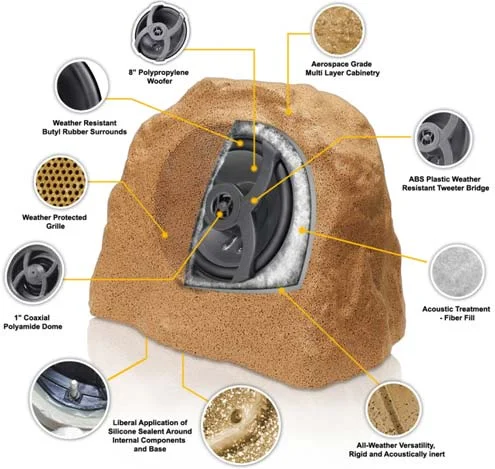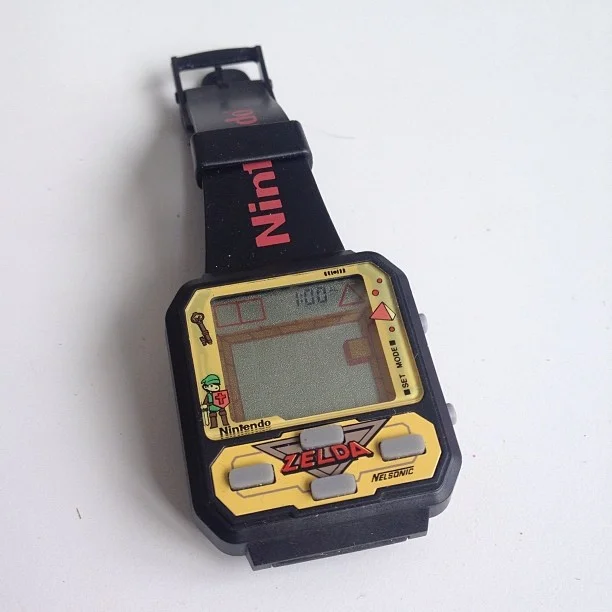September 22, Lausanne (Switzerland). I guess sensor-based soap dispensers have been designed in order to provide a touch-free system that is supposedly more hygienic for its users. However, almost everytime I run across such device, there's a little bit of soap under it. It's the messiness versus elegance that always happen when one think technology would be an easy solution for a simple problem.
object
Object repurposing
Invisible technology: rock speakers
I've always been fascinated by "rock speakers", i.e. audio speakers hidden in faux-rocks. Quite a weird object category, very ironic actually. There are some available on Amazon (see this one) and it's quite intriguing to read the technical features as well as the reviews by buyers. I can see that as an example of Invisible technology, perhaps in a different way than Mark Weiser's definition of Ubiquitous Computing.
What does it mean? What's the need to hide technology in a crappy plastic stone?
Zelda game wristwatch 1989
The "Legend of Zelda" watch is a multi-purpose device made by Nelsonic Industries, who obtained the Nintendo license back at the end of the 1980s. According to the Wikipedia, 12 million copies were sold, which is quite impressive and perhaps better than recent watch computers.
Is that a smartwatch? That's maybe not the main point here, but it's intriguing to think about the fact that there's already a lot of examples (like this) of showing how computation can help triggering a playful user experience on a wrist-based tiny device.
Beyond the functionalities, I'm also curious of the gestural behavior of the user here. The manipulation of the buttons is tricky but doable, although it's way different than the NES version of Zelda.
Geneva, 2011.




